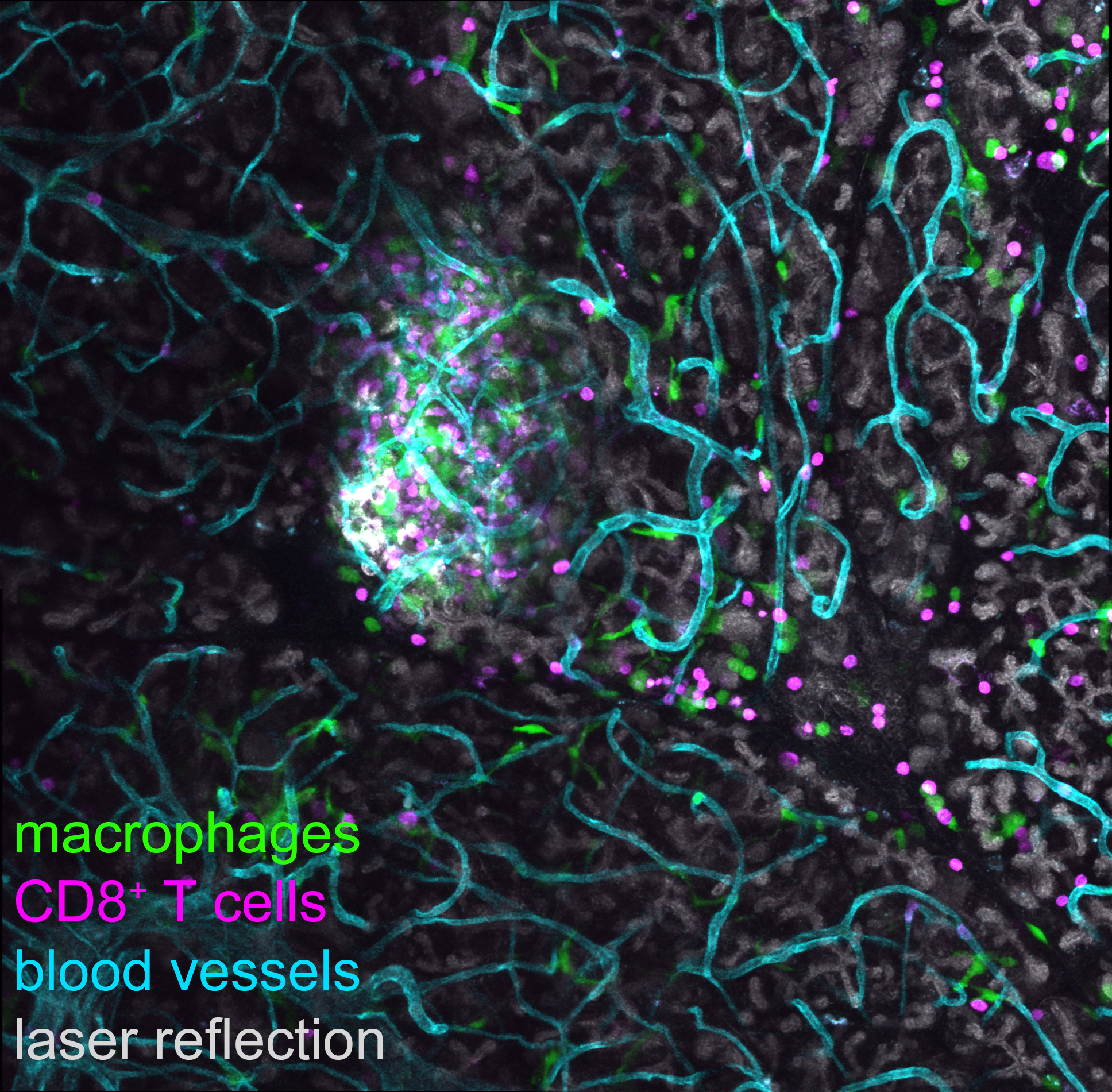
Research interests
Diseases related to autoimmune processes are increasing world-wide and fully effective treatments or cures are lacking in the majority of them. The interest of my lab is in studying inherent immune regulatory mechanisms which hold the potential to dampen or halt the autoagressive response against the body’s own tissues.
The main focus in the lab is on immune regulation in type 1 diabetes, where we have the ability to image the local environment around the insulin-producing cells at high resolution in vivo during onset of disease. The detailed information on immune cell behaviour and interactions with the microenvironment provides us with data which is further explored through complementary methods, as well as in human tissue and in clinical data.
Through this approach, we recently uncovered a new modes for immune regulation in the pancreas where one involves non-islet-specific CD8+ T cells which effectively regulated the immune response and spared the insulin-producing beta cells, and the other involves immune regulation by sympathetic nerve signaling. These are now two of the potent immune regulatory mechanisms we are following up on, where the aim is to take advantage of these in potential new treatment avenues.
Through this approach, we recently uncovered a new mode for immune regulation in the pancreas involving non-islet-specific CD8+ T cells which effectively regulated the immune response and spared the insulin-producing beta cells. This is now one of the potent immune regulatory mechanisms we are following up on, where the aim is to find potential treatment avenues that take advantage of these cells.
Overall, the lab strives to connect imaging-based preclinical models of type 1 diabetes to human clinical data and vice versa. We have the ability to explore hypotheses in organoid systems and in vivo models, and relate these to human pathophysiological findings in tissue samples, genomic data, and relevant patient characteristics in registries through clinical collaborations.
Group members
Group members:
- Robin Lindsay, postdoc
- Vijay Sai Josyula, PhD student
- Nestori Westerlund, MD/PhD student
Recruitment of lab engineer ongoing (mid-2021)
Recruitment of postdoctoral fellow ongoing (mid-2021)
